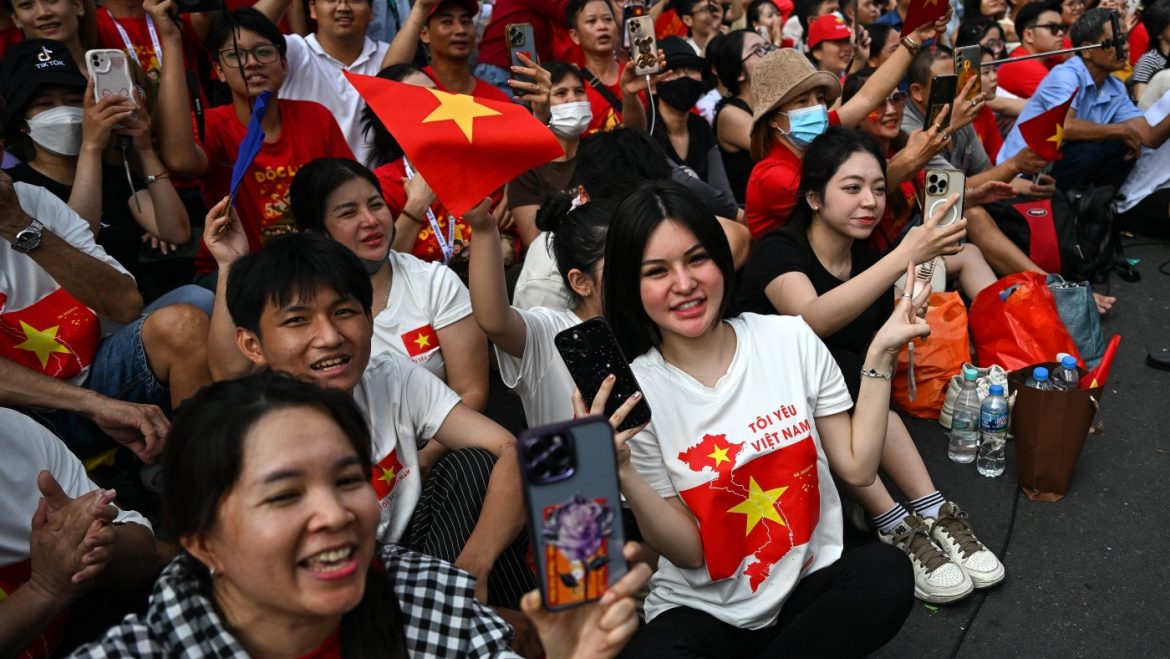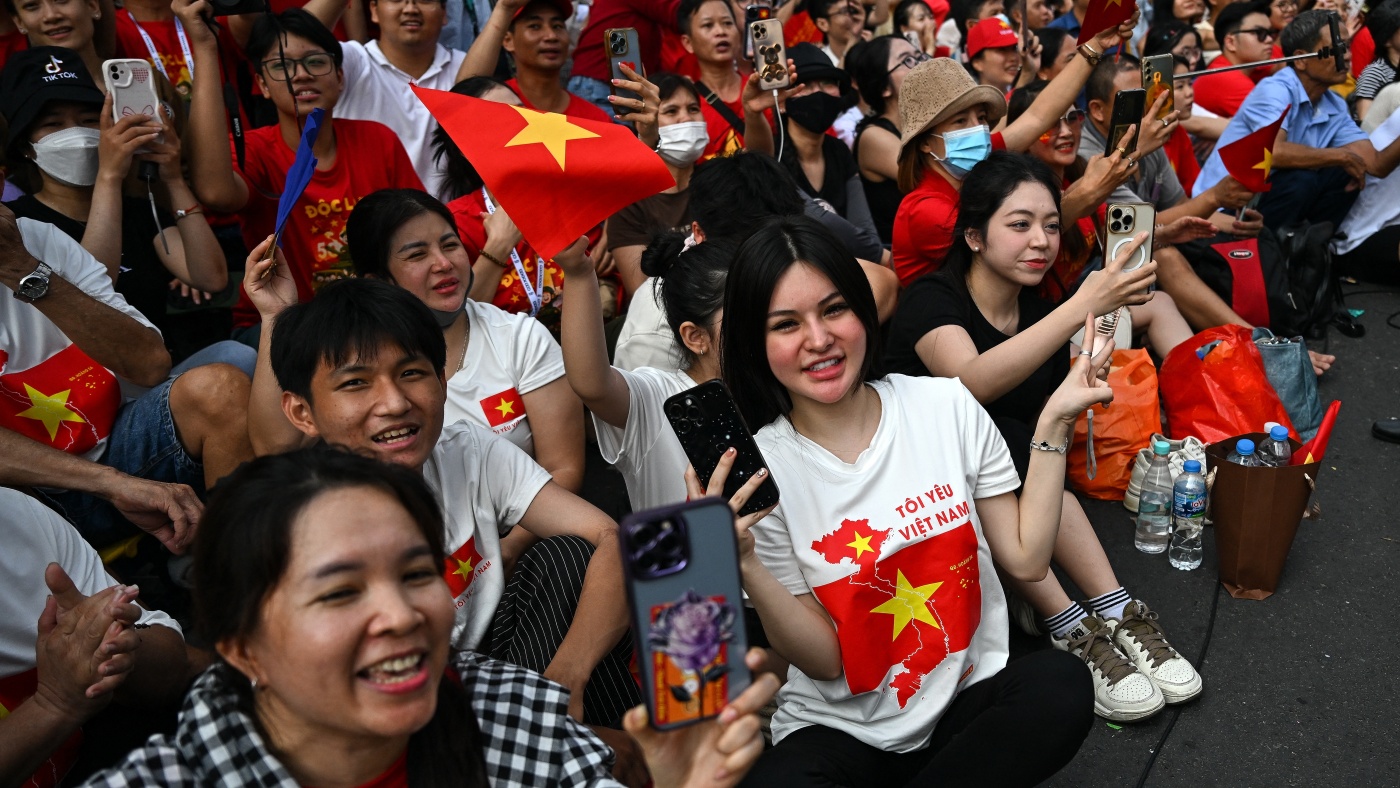Vietnam’s 50th Anniversary of the End of the Vietnam War: A Celebration of Unity and Peace
On April 30, 2025, Vietnam marked a significant milestone in its history: the 50th anniversary of the end of the Vietnam War. This momentous occasion was celebrated with a month-long series of events culminating in a grand military parade and various cultural activities. The focus of these celebrations was not on military victory but on unity, peace, and the formation of a modern, cohesive nation. This report delves into the significance of these celebrations, the themes of unity and peace, and the ongoing efforts towards reconciliation and healing.
The Significance of April 30, 1975
April 30, 1975, is a date etched in the collective memory of the Vietnamese people. It marks the fall of Saigon, the capital of South Vietnam, and the end of the Vietnam War. This day signaled the reunification of Vietnam under communist rule and the beginning of a new era for the country. Fifty years later, Vietnam commemorated this anniversary with a sense of pride and a focus on the progress made towards national unity and peace.
A Month-Long Celebration
The celebrations began a month before the actual anniversary, with various events and activities planned across the country. These included exhibitions, cultural performances, and educational programs aimed at educating the public about the war’s history and its impact on the nation. The month-long preparations culminated on April 30 with a grand military parade in Ho Chi Minh City, formerly known as Saigon.
The Military Parade: A Symbol of Strength and Unity
The military parade was a spectacle of Vietnam’s military might and a testament to the country’s progress over the past five decades. Spectators cheered as soldiers marched in formation, showcasing the discipline and strength of the Vietnamese armed forces. The parade also featured displays of modern military equipment, highlighting Vietnam’s advancements in defense technology.
However, the parade was not just about military prowess. It was also a symbol of national unity. Soldiers from different regions and ethnic groups marched together, representing the diverse tapestry of Vietnamese society. This display of unity was a powerful reminder of the country’s journey towards reconciliation and healing.
Themes of Unity and Peace
The celebrations were marked by a strong emphasis on unity and peace. Speeches by government officials and cultural performances underscored the importance of these themes. The focus was on healing the divides of the past and building a cohesive, united nation. This message was particularly poignant given the country’s history of division and conflict.
The Ongoing Efforts Towards Reconciliation
While the celebrations highlighted the progress made towards national unity, they also acknowledged the ongoing efforts towards reconciliation. To Lam, a prominent Vietnamese official, noted that the reconciliation remains unfinished. The war still defines Vietnam’s unity, and its unresolved divides continue to shape the nation’s social and political landscape.
The celebrations served as a reminder of the work that still needs to be done. They underscored the importance of addressing the lingering effects of the war and promoting healing and reconciliation among the Vietnamese people.
Vietnam’s Mended Ties with the United States
One of the most significant aspects of the celebrations was the focus on Vietnam’s mended ties with the United States. The war between the two countries ended in 1975, but it took decades for the relationship to normalize. Today, Vietnam and the United States have strong diplomatic and economic ties, reflecting mutual efforts to address the legacy of the war and build a peaceful future.
The military parade featured soldiers from both countries marching side by side, a powerful symbol of the progress made in bilateral relations. This display of unity was a testament to the healing power of diplomacy and the importance of reconciliation.
The Role of International Relations
The celebrations also highlighted the role of international relations in promoting peace and unity. Vietnam’s engagement with other countries, particularly its neighbors in Southeast Asia, has been crucial in fostering regional stability and cooperation. The celebrations served as a platform to strengthen these ties and promote a shared vision of peace and prosperity.
The Impact on Vietnamese Society
The 50th anniversary celebrations had a profound impact on Vietnamese society. They provided an opportunity for the country to reflect on its past, celebrate its achievements, and look towards the future with hope and optimism. The focus on unity and peace resonated with the Vietnamese people, who have long aspired for a cohesive, harmonious nation.
The celebrations also had a significant cultural impact. They showcased the richness and diversity of Vietnamese culture, from traditional music and dance to modern art and literature. This cultural renaissance was a testament to the country’s resilience and its ability to overcome adversity.
The Future of Vietnam
As Vietnam looks towards the future, the themes of unity and peace will continue to guide its development. The country faces numerous challenges, from economic growth to environmental sustainability, but it is well-positioned to overcome these obstacles. The 50th anniversary celebrations were a reminder of the country’s strength and resilience, and its commitment to building a better future for all its people.
Conclusion: A Beacon of Hope
Vietnam’s 50th anniversary celebrations were more than just a commemoration of the end of the Vietnam War. They were a celebration of unity, peace, and the resilience of the Vietnamese people. The focus on these themes underscored the country’s journey towards reconciliation and healing, and its commitment to building a cohesive, harmonious nation.
As Vietnam continues to navigate the challenges of the 21st century, the lessons of the past will guide its path forward. The 50th anniversary celebrations were a beacon of hope, a reminder of the country’s strength and its ability to overcome adversity. They were a testament to the power of unity and peace, and a call to action for a brighter, more prosperous future.


